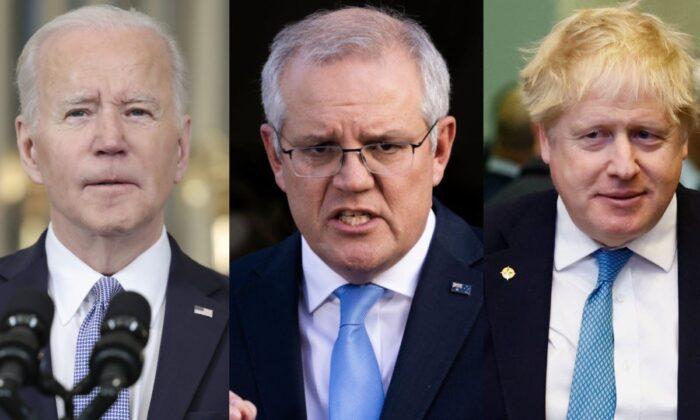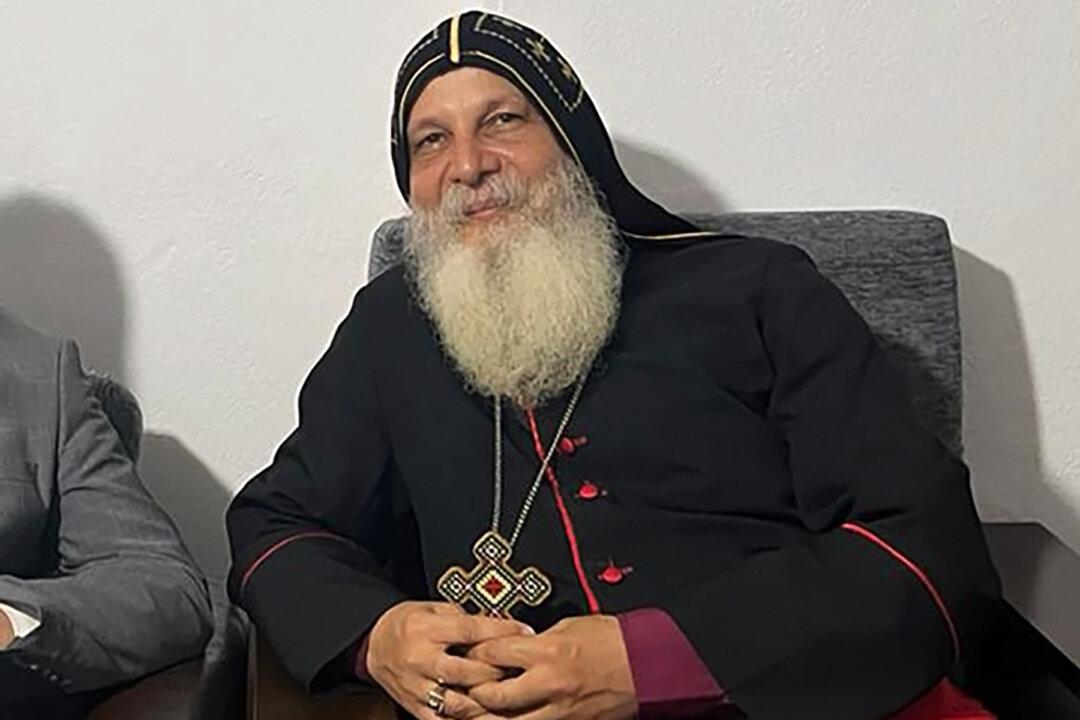The heads of Australia, the United States, and the United Kingdom have vowed to cooperate on the development of hypersonic weapons as the three nations push to advance the trilateral AUKUS agreement amid increasing tensions in the Indo-Pacific region.
On April 6, U.S. President Joe Biden and Prime Ministers Scott Morrison (Australia) and Boris Johnson (UK) released a joint statement outlining the progress of the AUKUS agreement thus far, including cooperation on establishing a nuclear-powered submarine fleet in Australia.
“We also committed today to commence new trilateral cooperation on hypersonics and counter-hypersonics, and electronic warfare capabilities, as well as to expand information sharing and to deepen cooperation on defense innovation,” they added.
Hypersonic weapons fly at five times the speed of sound, are launched from sub-orbital platforms and are designed to overcome enemy defence systems through sheer speed.
China and Russia are currently ahead of Western nations in the development of these weapons, prompting U.S. leaders to expedite their own development. Russia has deployed the weapons in the current invasion of Ukraine.
The latest move follows an earlier partnership between the United States and Australia on hypersonic weapons development called SCIFiRE (Southern Cross Integrated Flight Research Experiment).
The three nations will also develop cutting-edge technology in the fields of quantum technology, artificial intelligence, undersea capabilities (including drones), and advanced cyber.
“As we mature trilateral lines of effort within these and other critical defense and security capabilities, we will seek to engage allies and close partners as appropriate,” the document stated.
Meanwhile, the prime ministers of New Zealand and Canada, Jacinda Ardern and Justin Trudeau, have each received heavy criticism for their nations missing out on AUKUS—despite being part of the tight-knit Five Eyes’ intelligence-sharing group with Australia, the U.S. and the UK—with blame being directed at their soft stance on defence and Beijing relations.
AUKUS was established in September 2021 amid rising tensions with Beijing in the Indo-Pacific. The decision to arm Australia with nuclear-powered submarines would kick-start a major shift in the power balance in the region, with only six nations in the world currently carrying advanced weapons.
“Its this growing spread of People’s Liberation Army power that is one of the reasons for AUKUS to come into being,” he previously told The Epoch Times. “All this will do is accelerate the efforts to implement the agreement.”
Meanwhile, Australian Treasurer Josh Frydenberg said developing hypersonics was not a game of catch-up with Russia and China.
“These are the latest and high-tech missiles that we’re talking about. It’s not like they’ve been in operation for a decade or so,” he told the Nine Network.
China’s Ambassador to the United Nations Zhang Jun responded on April 4 warning the leaders to “refrain from doing things which may lead” to conflict, according to a statement to reporters.
Under the new plan, 24 Super Hornet jets and the country’s F-35A Joint Strike Fighter fleet will be armed with Joint Air-to-Surface Standoff Missiles (JASSM-ER) by 2024—three years ahead of schedule.
The JASSM-ER is an air-to-ground cruise missile manufactured by Lockheed Martin and Raytheon and has a range of 900 kilometres.
While Australian naval vessels, the Anzac-class frigate and Hobart-class destroyers, will be armed with Naval Strike Missiles (NSM) manufactured by Norwegian firm Kongsberg Defence and Aerospace.
The new anti-ship missiles will arrive five years ahead of schedule and will have a range of 185 kilometres, replacing the current Harpoon missiles.
Minister Peter Dutton said there was a need to be “realistic” about the actions of the CCP and the likelihood of conflict in the region.
“Nobody a couple of years ago could have predicted what happened in Ukraine and there’s no sense in us being blind to the reality of what’s happening in our own region; the amassing of nuclear weapons by China should cause anyone concern and that’s why we need to make this investment and it'll keep our country safer,” he told 3AW radio.






Friends Read Free